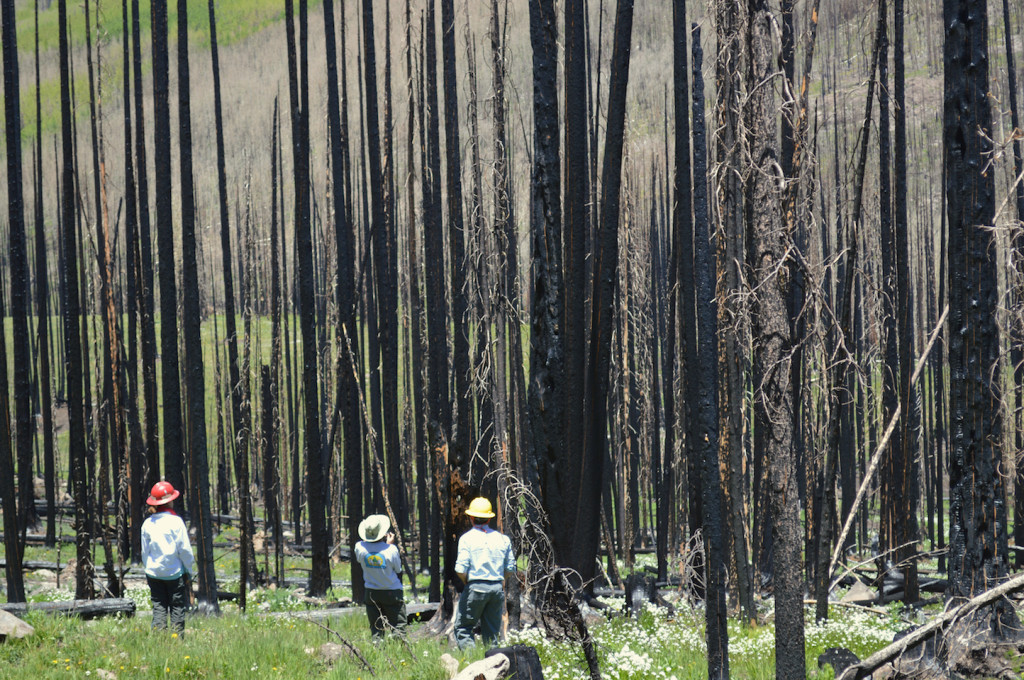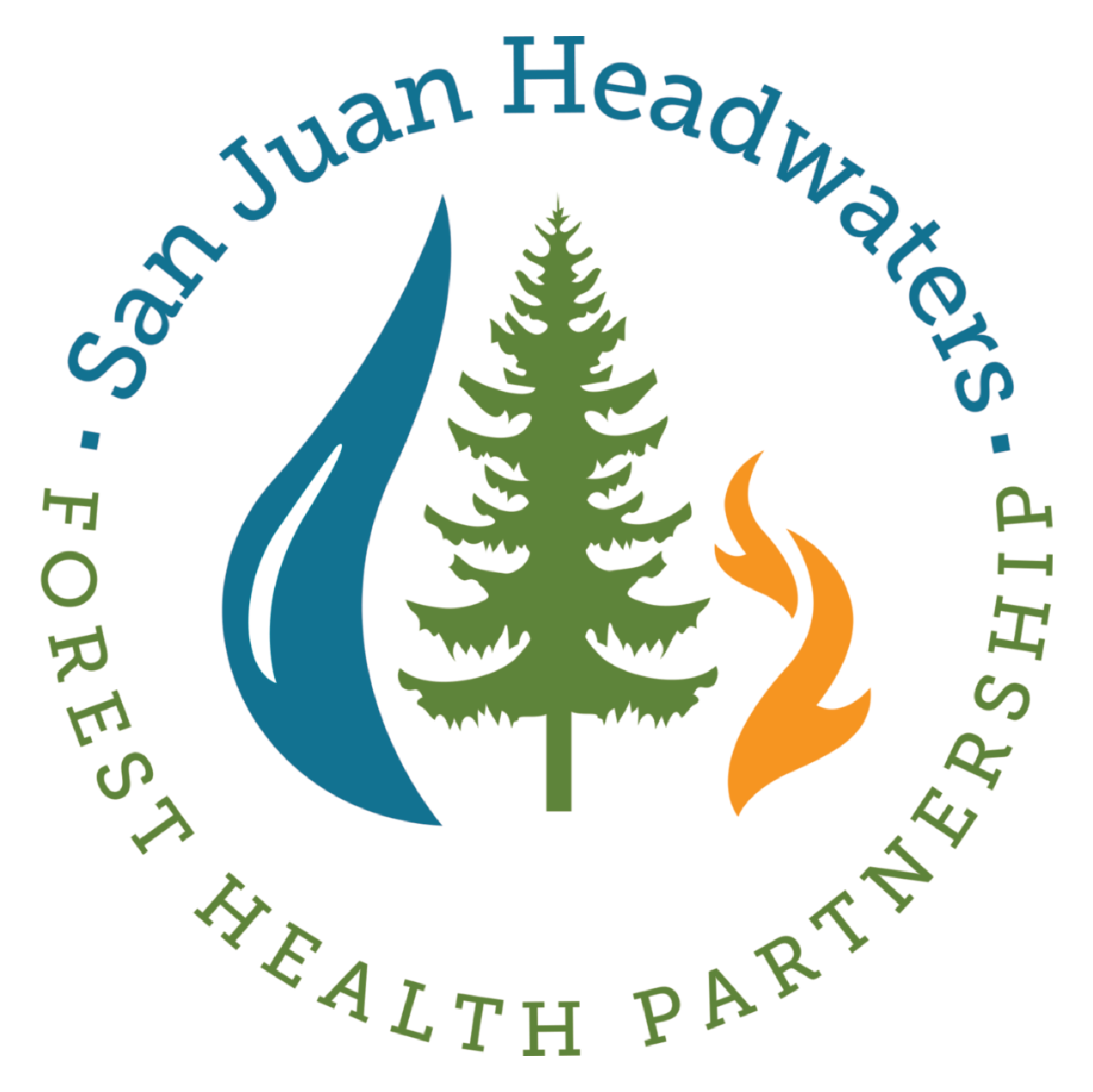Mission
The SJHFHP develops science-based, collaborative priorities for the sustainable management of forests, watersheds and essential community resources.
Background
Wildfire is part of life in Southwest Colorado. It plays an integral role in forest health and heavily influences ecological community processes. At the same time, wildfire threatens human communities, infrastructure, resources, lives, and economies. Growing populations and past forest management practices have interrupted patterns of periodic fire in the region, while a lack of local wood products industry has made it challenging to use industry as one of many tools available for actively managing forest health. These realities generate ecosystem responses that make our forests more susceptible to disease, insects, and high severity wildfire.

About our work:
How we work:
Forest health is overall health
The San Juan Headwaters Forest Health Partnership recognizes that addressing forest health concerns using a collaborative, science-based approach helps our communities to be resilient in the face of wildfire. In addition to physically protecting our community and enhancing ecosystem function, the work the Partnership prioritizes, plans, and enacts aims to protect key features of natural and engineered watersheds. Our forest hosts the headwaters of invaluable water resources that serve downstream communities across the southwest. By initiating collaborative approaches and proactive forest management to address wildfire risk, the Partnership builds local management capacity, engages and educates the public, and directly addresses community needs.
Our approach
All of the projects that the SJHFHP participates in are decided using the principles identified in our strategic plan. The Partnership brings together community members, land managers, environmental groups, community organizers and local decision makers to:
- Prioritize and work at a landscape-scale across jurisdictional boundaries
- Implement on-the-ground projects that address values at risk
- Enhance local forest products industry
- Utilize diverse forest management tools when and where appropriate
- Consensus-based decision making and multi-stakeholder input
- Educate and involve the community
